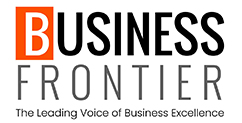The Paris 2024 Olympics will be remembered as a historic milestone, not only in the realm of sports but also in the ongoing pursuit of gender equality. For the first time in the 128-year history of the modern Olympic Games, there was an equal number of male and female athletes competing: 5,250 women and 5,250 men. This unprecedented achievement is a powerful statement to the world, showcasing that gender parity is attainable even in the most competitive and high-profile arenas.
The journey to this landmark moment has been long and challenging. When Paris last hosted the Olympics in 1900, it marked the first time that women were allowed to compete. Out of 997 athletes, only 22 were women, participating in just five sports. Fast forward 124 years and we witness a transformation that would have seemed unimaginable back then: full gender equality across 28 of the 32 Olympic sports. This achievement not only sets a precedent for future Games but also sends a strong message that gender equality is within reach across various sectors of society.
The progress achieved by the Olympic movement took time to happen. It is the result of decades of persistent effort by the International Olympic Committee (IOC), national Olympic committees, international federations, and countless advocates for women in sports. The IOC’s commitment to gender equality has been firm recently. In 2014, it adopted the Olympic Agenda 2020, which included a pledge to work with international federations to achieve 50% female participation in the Olympic Games. The Gender Equality Review Project followed this in 2018, which provided 25 recommendations to advance gender equality in sports.
The results speak volumes. In 1996, women made up just 34% of Olympic athletes. By 2012, this figure had increased to 44%; in Tokyo 2020, women comprised 48% of participants. With Paris 2024, the ultimate goal of 50/50 representation has been realized. However, the Olympics’ commitment to gender equality extends beyond athlete numbers. The 2024 Games featured Olympic history’s most balanced distribution of medals between women and men. Additionally, mixed-gender events have been added to the program, fostering cooperation and mutual respect between male and female athletes. The IOC has also made significant strides in increasing the number of women in leadership positions within sports organizations and promoting equal media coverage of male and female athletes.
While the Olympics have achieved remarkable progress in gender equality, this begs the question: If the Olympics can attain gender parity, why are we still so far behind in other areas of society? The stark contrast between Olympic progress and societal lag highlights several key points:
1) Clear goals and commitment matter: The IOC set specific, measurable targets for gender equality and worked systematically to achieve them. Many other sectors need more clear objectives or the will to pursue them rigorously. Progress becomes more accessible to track with measurable goals, and achieving parity becomes even more challenging.
2) Structural changes are necessary: The Olympics didn’t just encourage more women to participate; they changed the very structure of the Games, adding events and reallocating quotas to ensure equal opportunities. Similar structural changes are needed in politics, business, and other fields to create space for women’s advancement.
3) Leadership is fundamental: The IOC’s top-down approach, driven by its leadership, ensured that gender equality became a priority across all levels of the Olympic organization. This kind of committed leadership is often lacking in other sectors. In regions like the Middle East, for instance, the representation of women on corporate boards remains low, with the UAE at 11% and Saudi Arabia at just 2%. Fair and equal representation at the board level can have a cascading effect, promoting gender equality throughout the organization.
4) Cultural shifts take time but are possible: The Olympics have shown that cultural attitudes can change even in the traditionally male-dominated world of sports. This progress should give us hope for other areas of society. However, it is essential to remember that changing deeply ingrained cultural norms is a gradual process that requires sustained effort and commitment.
5) Global cooperation can accelerate progress: The Olympics unite nations and organizations worldwide, creating a platform for shared commitment to gender equality. International collaboration could drive improvement in other fields, fostering a global movement toward parity.
It is important to note that while the Olympics have made remarkable strides, challenges remain. Some sports still lack gender parity, and equality in coaching and sports administration lags behind athlete representation. Additionally, achieving numerical equality does not automatically solve deeper issues such as sexism, unequal resources, or media bias in sports.
Nevertheless, the Olympic movement’s success in achieving gender parity offers valuable lessons and inspiration for other sectors. It demonstrates that significant progress is possible with clear goals, structural changes, committed leadership, and sustained effort.
As IOC President Thomas Bach stated, “This is our contribution to a more gender-equal world.” The Olympics has indeed set a powerful example. However, the real test will be whether this example can catalyze broader societal change.
The 2024 Paris Olympics was not just a celebration of athletic achievement; it was a beacon of hope for gender equality worldwide. It reminds us that parity is possible, even in the most competitive, male-dominated environments. The challenge now is to take the Olympic spirit of equality beyond the arena and into boardrooms, parliaments, and everyday life. Only then can we genuinely claim victory in the race for gender equality.












